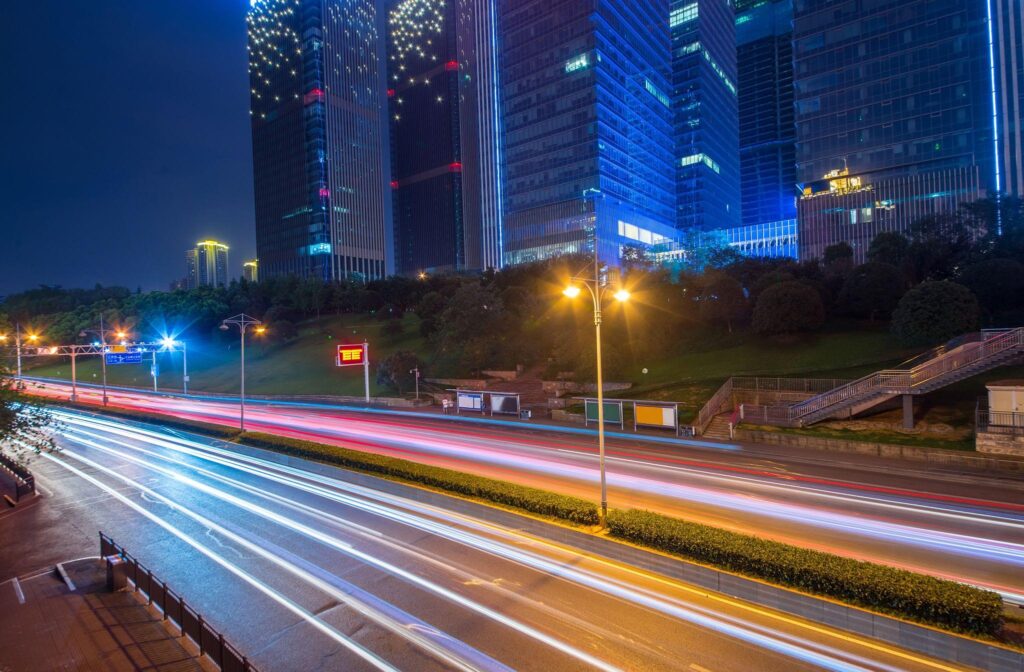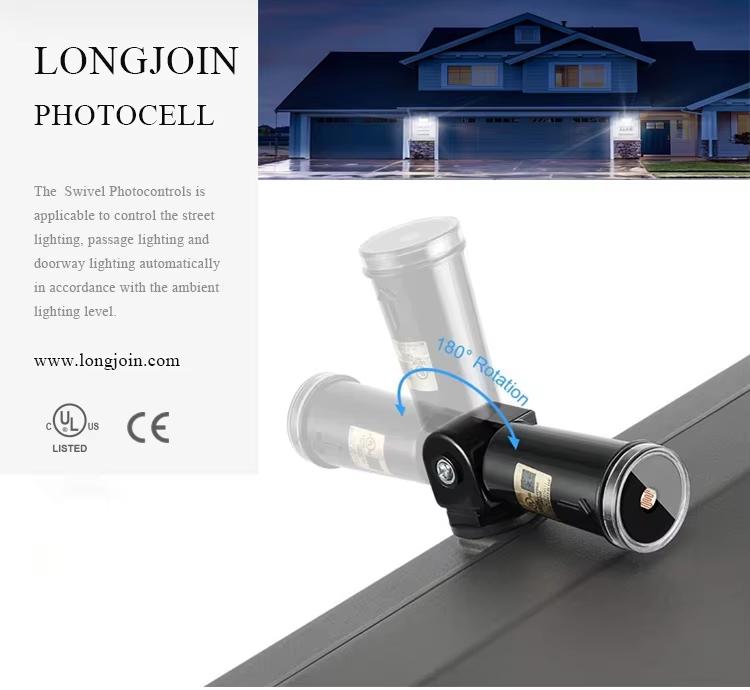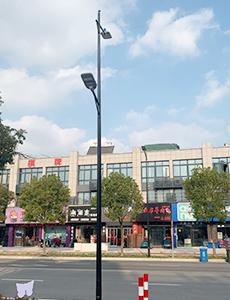Outline
- Introduction
- What Are The Challenges Of Electric Grid Adaptability In South America?
- How To Overcome Electric Grid Adaptability Challenges?
- Why is Climate Resilience Of Photocells Important In South America?
- What Should Be The Photocell’s Selection Criteria In South America?
- Are Photocells a Reliable Choice In South America? Case Studies
- The Bottom Line
Why do some outdoor street light photocontrollers fail too soon in South America? Voltage fluctuations, humidity, or extreme heat are some fundamental causes. These factors can wear out standard photocells quickly.
South America’s electrical grids are unpredictable, and its climate is just as demanding. So, to ensure photocontrollers last longer and work efficiently, smart design is the key.
This includes voltage adaptability, climate-resistant materials, and protective features. This guide explores the biggest challenges and how to overcome them for reliable outdoor lighting.

Image Courtsey: Amazon.com
What Are The Challenges Of Electric Grid Adaptability In South America?
South America, being home to 12 independent nations, presents unique electrical grid challenges. A case in point is the 2019 blackout. This affected Argentina, Uruguay, and parts of Paraguay, showcasing grid instability. Further, due to different regional standards, voltage variability is a notable concern. Some other important considerations include
- Infrastructure Limitations
- Variability of Renewable Energy Sources
- Investment and Regulatory Challenges
- Economic and Social Factors
- Smart Grid Implementation
Addressing these concerns is critical to optimising the photocontroller’s performance. Below are some possible ways out.
How To Overcome Electric Grid Adaptability Challenges?
Wide Voltage Range Designs
To counteract voltage fluctuations, lighting controls should incorporate wide voltage range designs. Devices like the LTC4367 can be helpful. Their operating voltage ranges from 2.5V to 60V, with overvoltage protection up to 100V. This adaptability ensures consistent performance despite input voltage variations.
Overvoltage and Undervoltage Protection
Multiple devices are available in the market that monitor input supply using window comparators. They disconnect sensitive electronics during voltage transients. These circuit protectors are an effective counter against ignition cranking and load dumps, ultimately boosting safety.
Surge Protection Features
Photocells are sensitive devices, highly vulnerable to power surges. Incorporating surge stoppers and MOSFETs helps prevent damage from unexpected voltage increases.
Why is Climate Resilience Of Photocells Important In South America?
South America’s diverse terrain has extreme climate conditions. Here’s a table summarising the region’s climatic diversity:
| Region | Weather Condition | Impact on Photocontrollers |
| Amazon Basin, including Brazil, Peru, and Colombia | Year-round humidity exceeding 80%, frequent thunderstorms | Corrosion risk, moisture ingress, electrical short circuits |
| Atacama Desert, including Chile and Peru | <15 mm annual rainfall, daily temperature swings of 30°C | UV degradation, brittle casings, overheating risks |
| Patagonia, including Argentina and Chile | Winds exceeding 100 km/h, winter lows below -20°C | Brittle materials, battery freezing, mechanical stress |
| Coastal Regions including Brazil, Ecuador, and Argentina | High salinity in the air, frequent tropical storms and hurricanes | Corrosion, electrical failures, and waterproofing degradation |
| Andes Mountains including Peru, Bolivia, Colombia, and Ecuador | Reduced air pressure, rapid weather shifts, high UV exposure | Electronic component failure, UV damage, and condensation inside enclosures |
How To Ensure Photocontroller Reliability In South America’s Diverse Climate?

- Photocells to be deployed in high-temperature regions should be constructed with heat-resistant materials.
- To counter moisture and dust, ingress protection ratings are the ultimate solution. Ensure your device has a minimum IP65 rating or above. LongJoin photocells are the most recommended as they have a minimum of IP65.
- In salty and coastal areas, corrosion can be a real headache. To save photo sensors from this, casings made from stainless steel, anodised aluminum, or UV-resistant polycarbonate can be employed. They are not only good for corrosion but also effective in combating UV.
What Should Be The Photocell’s Selection Criteria In South America?
To ensure your photo sensors last long, despite all the challenges the region offers, it is critical to make careful consideration while selecting them. Key factors include
- Voltage compatibility
- Environmental protection
- Robust surge and lightning resistance.
Voltage Compatibility
Operational voltage range in South America is typically 120V or 220V AC. Photocontrol receptacles matching this will ensure proper functionality. For instance, models like the JL-202A are rated for 120V AC. This also complies with CE, ROHS, and UL standards, indicating suitability for regions with this voltage standard.
Environmental Protection Standards
Again, given the continent’s diverse climates, the Ingress Protection is the most recommended solution to environmental vulnerabilities. The table below highlights different IP ratings and their offered protection level.
| IP Rating | Protection |
| IP65 | Most commonly employed protection against low-pressure water jets |
| IP66 | Suitable for coastal and storm-prone areas, compatible with high-pressure water jets |
| IP67 | Can withstand temporary immersion up to 1m, Ideal for extreme humidity and flood-prone locations |
NOTE: Besides IP ratings, IK is another standard indicating impact resistance. For instance, IK08 offers protection against external mechanical impacts. This is beneficial in areas prone to physical disturbances.
Surge and Lightning Protection
Electrical surges and lightning strikes are common challenges. In light sensors, the best solution against them is surge protection devices. Additionally, compliance with standards like IEC 62305 can offer an additional protection layer. This ensures that the device meets international criteria for lightning protection.
Product Customization for Regional Requirements
Each country in the South American region has its specific protocols regarding photocells. The product should be in compliance with these certifications. This is also necessary to withstand specific environmental and operational challenges.

Tailored Technical Support and Training
Photocontroller installation could be tricky without proper guidance. Ensure your selected supplier offers continuous support. Chi-Swear, being a reliable supplier of LongJoin photocells, offers 24/7 assistance for its clients.
Robust After-Sales Service and Warranty Options
For any company offering after-sales services and warranty, it demonstrates their commitment to quality and customer satisfaction. The normal warranty period spans around 2 years.
Are Photocells a Reliable Choice In South America? Case Studies
In South America, there are many notable examples that testify to the effectiveness of photo sensors. Below are some of these.
Medellín, Colombia
Challenge: Medellín’s 5,000-fixture lighting network suffered from 35% energy waste due to continuous full-brightness operation.
Solution: The city deployed NEMA-rated solar street light controllers equipped with Zhaga-compliant drivers.
Results: This initiative resulted in a 52% reduction in energy costs. Further, the ROI was achieved within 2.3 years.
Antofagasta, Chile
Challenge: Antofagasta sought to enhance public lighting efficiency and reduce energy consumption.
Solution: The city implemented smart photocell sensors capable of adjusting lighting based on ambient conditions and occupancy.
Results: This deployment achieved notable energy savings and improved lighting reliability.
The Bottom Line
Optimising photocontroller performance in South America requires robust designs that withstand electrical instability and harsh climates. For high-quality, resilient light controllers tailored to these challenges, Chi-Swear offers proven expertise and cutting-edge technology, making them a trusted choice for lasting performance.
External Links
- https://en.wikipedia.org/wiki/2019_Argentina%2C_Paraguay_and_Uruguay_blackout
- https://en.wikipedia.org/wiki/MOSFET
- https://www.tribalclimatecamp.org/what-is-the-climate-in-south-america/
- https://europa.eu/youreurope/business/product-requirements/labels-markings/ce-marking/index_en.htm
- https://en.wikipedia.org/wiki/RoHS
- https://www.ul.com/






